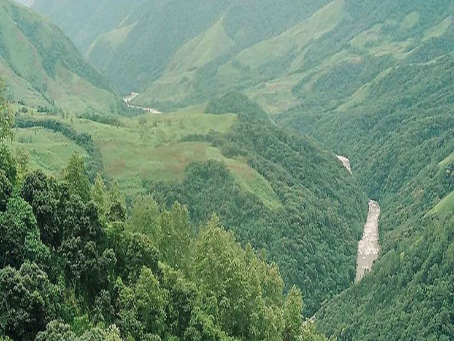As humane warriors we stand for social and environmental equity – for a humane planet. And thus, we would like to stress with this blog post on the current issues we have read up on environmental inequity. In future work, we aim to support more causes to protect our environment.
The following write up is from one of our warriors, Eashan Saikia, from Assam, sharing his concerns from the environmental racism in the North-eastern part of India.
Environmental racism refers to the way in which minority group neighborhoods (populated primarily by people of color, members of low socioeconomic groups, Indigenous Peoples, and Adivasis) are burdened with a disproportionate number of hazards, including toxic waste facilities, garbage dumps, and other sources of environmental pollution and foul odors that lower the quality of life.
Systemic Environmental racism:
1. What is the Environmental Impact Assessment (EIA)?
- The UN Environmental Programme (UNEP) defines Environmental Impact Assessment (EIA) as a tool used to identify the environmental, social and economic impacts of a project prior to decision-making.
- It aims to predict environmental impacts at an early stage in project planning and design, find ways and means to reduce adverse impacts, shape projects to suit the local environment and present the predictions and options to decision-makers.
- Environment Impact Assessment in India is statutorily backed by the Environment Protection Act, 1986 which contains various provisions on EIA methodology and process.
2. How is Govt of India preparing to discard EIA?
- Recently, the Ministry of Environment, Forest and Climate Change (MoEFCC) has, on March 23 2020, proposed a draft Environmental Impact Assessment (EIA) notification, that seeks to replace the current notification which goes back to 2006.
- The new EIA draft reduces the time limit for clearing projects. In addition to that, it will validate past and future violations by offenders.
- It gives more power to the people proposing the project to get it cleared and reduces the powers of organisations that are scientifically collating EIA.
3. What are the current consequences?

Baghjan Fires
In Baghjan, Assam, the Oil India Limited (OIL) has had a major leakage of Natural Gas that has eventually caught fire. The most affected by this leakage, and the fire, is the wildlife of Dibru-Saikhowa National Park.
- Burnt carcasses of river dolphins were found on the shores of the local rivers, and destruction of the ecology has led to a tremendous imbalance.
- This incident has also led to an widescale displacement of the local indigenous population whose land has been rendered unusable for several years in the near future.
- This is a direct consequence of the OIL violating regulations such as the EIA where a series of events took place in which environmental laws were moulded and interpreted to suit the company and in ‘national interest’.
4.What could be the next imminent danger?

The Dibang Valley in Arunachal Pradesh, India is the ancestral home of the indigienous Idu Mishmi community, who have been protecting the richest bio-geographical province of the Himalayan zone. The valley also hosts 25 grobally threatened species (19 birds and 6 mammals).
- The Etalin Project is a 3097 MW hydroelectric project in the Dibang Valley, which has sought for Forest Clearance (FC) from the Environment Ministry. If approved, it would lead to the felling of 2.7 lakh trees and submergence of 1150 hectare of forest land.
- Additionally, the valley lies in a region prone to high seismic activity, and moreover, global warming is leading to the melting of the several himalayan glaciers in the mountains of Arunachal Pradesh.
Together, all these factors will lead to the Idu Mishmi community to be the direct recipients of Environmental Racism, and potentially the entire region will be in a risk of natural and man made hazards.
Sources:
- https://thewire.in/environment/how-malleable-laws-pliant-panels-helped-oil-secure-clearance-to-drill-in-biodiverse-area
- https://science.thewire.in/environment/baghjan-oil-well-national-board-for-wildlife-oil-india-limited/
- https://letindiabreathe.in/
- https://www.moneycontrol.com/news/photos/india/in-pics-explained-massive-fire-at-assams-baghjan-oil-well-heres-all-you-need-to-know-about-the-blowout-5387941.html
- Hindustantimes.com
- Thehindu.com
- Drishtiias.com
- Thecitizen.in
- Images from Economictimes and Telegraph India respectively



